What to Expect at Your Rhinplasty Consultation
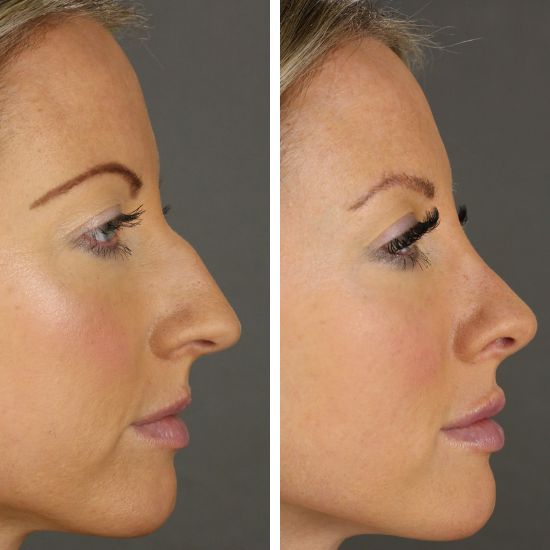
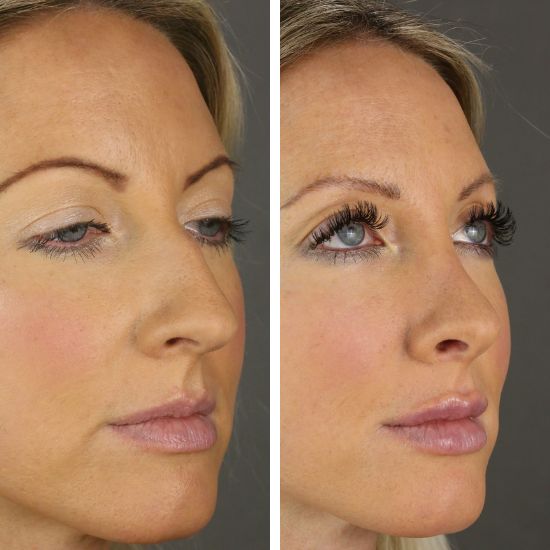
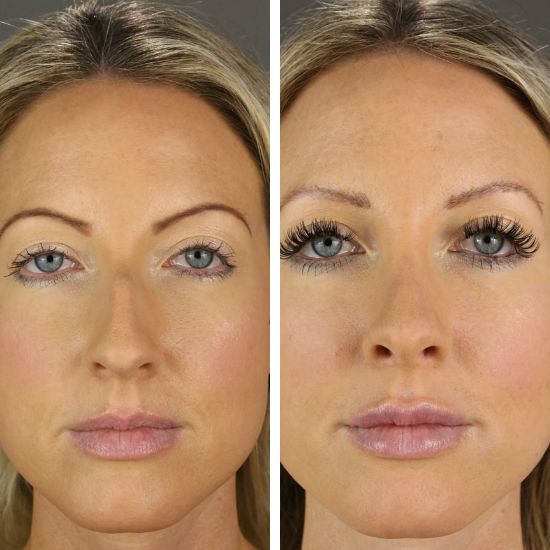
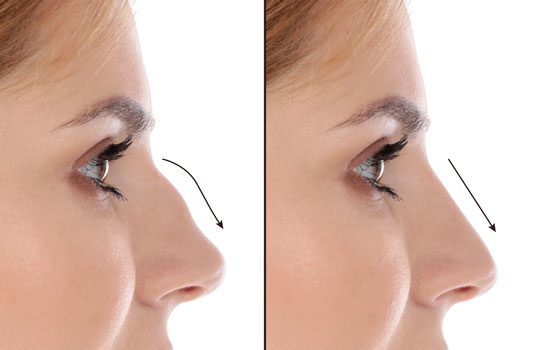
Patients usually seek consultation to reduce the size of the nose and enhance its shape. Dr. Newman makes a thorough can complete checklist of the patient’s wishes for desired nasal shape. He then loves to draw the patient’s nose from different angles to illustrate what is happening with the nasal shape and as well as discuss the plan for treatment. Drawing and discussing provide a deep understanding of what issues are affecting the shape and give a realistic understanding as to how the patient’s nose can be changed to get them to their goals. Dr. Newman will discuss the alternatives for improvement and recommend the best option.
Rhinoplasty : Care and Maintanence
The Temecula rhinoplasty experience includes not only the procedure itself but rather encompasses all of the thought processes, the consultation and planning, the preoperative appointment, the surgery day itself and your postoperative appointments. One might even say that all of the thoughts and ideas a patient has prior to their consultation are also part of the rhinoplasty process because most patients have been thinking about issues with their nasal shape for quite a while.
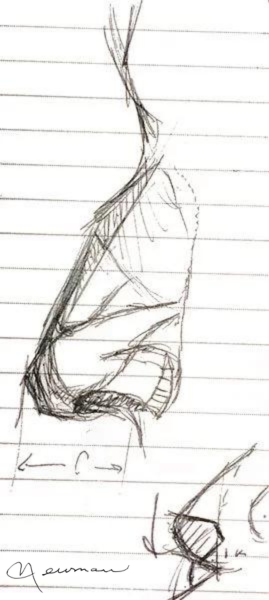 At your consultation, Dr. Newman will get your thoughts on what you don’t like about your nose and how you want it to look. He loves to draw the nose from different angles and this serves as a spring- board to discuss how the nose can be changed and helps patients to share in the creative process. Dr. Newman will offer his opinion on not only how goals can be met but how to elicit beauty from the patient’s current nasal shape. He will also strive to bring the nose into harmony with the rest of the face and share his thoughts on this issue. Dr. Newman feels that simply taking a photograph and morphing it on a computer is not that enjoyable or predictive and drawing the patient’s nose lends a much richer experience.
At your consultation, Dr. Newman will get your thoughts on what you don’t like about your nose and how you want it to look. He loves to draw the nose from different angles and this serves as a spring- board to discuss how the nose can be changed and helps patients to share in the creative process. Dr. Newman will offer his opinion on not only how goals can be met but how to elicit beauty from the patient’s current nasal shape. He will also strive to bring the nose into harmony with the rest of the face and share his thoughts on this issue. Dr. Newman feels that simply taking a photograph and morphing it on a computer is not that enjoyable or predictive and drawing the patient’s nose lends a much richer experience.
The nose has its own mini-architecture and so drawing the nose gives patients a deeper and more gratifying sense of understanding as well as provides a realistic appraisal as to what can be accomplished for each patient based on their nasal anatomy. The entire experience is and should be fun and Dr. Newman is dedicated to help each patient get the most from this adventure.
At the end of your procedure and before you awake, a small plaster of paris splint will be sculpted onto the nose to maintain its position. Also, a tiny pack will be placed only within the nostril (and not up the nose!) Patients can sometimes breathe through their nose around the small pack. The next morning, the small packs are removed but the splint is kept in place for six days. Patients often can immediately see changes in the shape of the nose the morning after their procedure and can see that the tip is smaller, softer and less projecting and they can get a sense that the bump is gone.
While the splint is still on, patients can clean the edge of the nostril with soapy Q-tips and use Vaseline to keep the area moist. Most patients don’t schedule important functions while the splint is on as it brings attention but they can walk outside and perform most of their usual activities. It’s very important to keep pets from jumping up towards the face and workouts at the gym are not commenced for at least three weeks.
At six days after your rhinoplasty, the splint is removed and the sticky substance from the splint that coats the skin can be gently removed with alcohol wipes. With the splint unveiled, patients now see that the bump is gone and the nose already looks smaller. For the next three or so weeks, swelling of the skin in the bump area and on the sides of the nose comes down and patients can begin to see their new nasal line which is that beautiful straight line that moves from the inner edge of the eyebrow to the nasal tip. After this three week period the tip is still swollen and it takes longer for tip swelling to go down than in the upper nose. It depends on the initial size of the tip but many patients see that the tip is smaller than it was prior to surgery even at three weeks. It takes at least a full six months to see the final shape of the tip because of this lag in the decrease in swelling of the tip as compared to the upper nose swelling. But after the three week period, and as the tip is already smaller than it was preoperatively, swelling of the tip is mostly only noticed by the patient.
After Temecula rhinoplasty, patients are back to jogging and other aerobics at about three weeks. Heavy lifting is discouraged for about six weeks when full work outs can be done. During rhinoplasty (nose job), the thin nasal bones are moved to create a more beautiful and elegant form. These bones have the power to heal very quickly and are mostly “set” at two weeks but it is very important for patients to avoid the possibility of contact with the nose for six weeks. By that time, the bones are fully healed.
Since it probably takes a few months until patients will be happy with their photographic image, it may be most wise to schedule rhinoplasty for that amount of time prior to any major event such as a wedding. Another common scheduling idea is to have the procedure prior to a transition to a new environment. For example, some patients have their rhinoplasty at the end of high school or during the summer prior to going to college or beginning work.
Temecula Rhinoplasty surgery is a small surgery but can lend significant improvement to nasal shape and the rest of the face. And enjoying the process can help great results
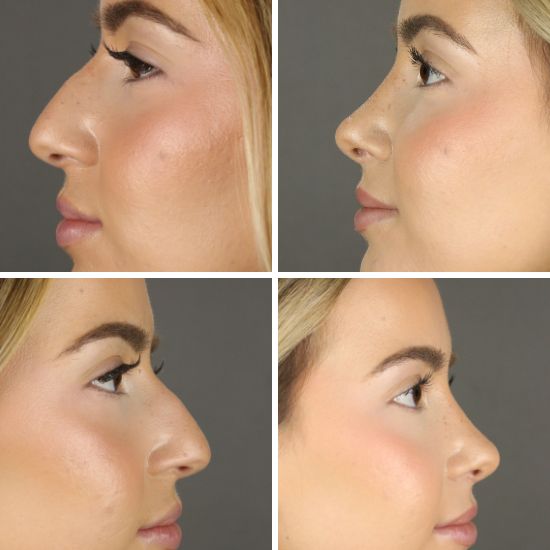
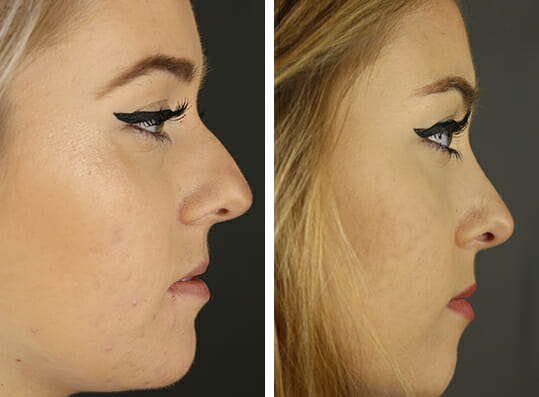
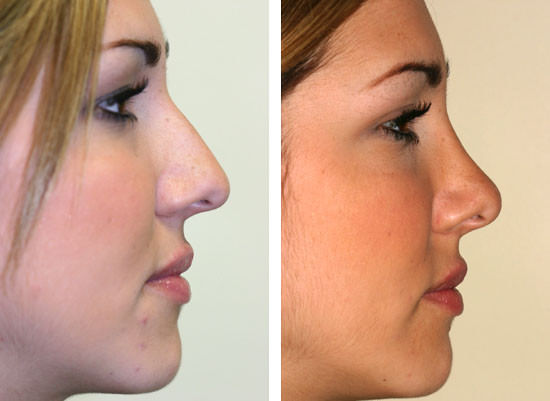
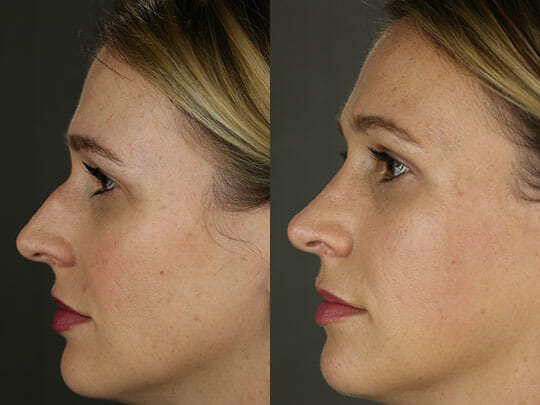
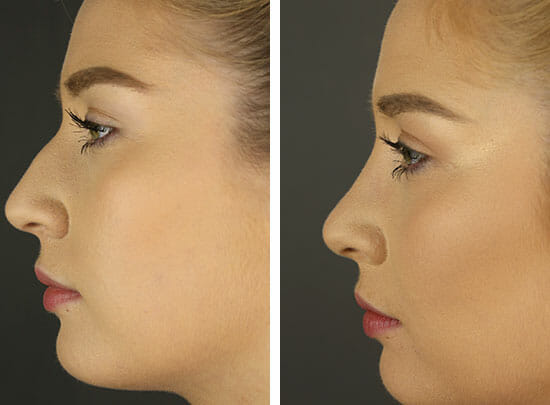
Schedule your consultation today! Call Murrieta Plastic Surgery today at (951) 698-3344 for nose jobs, breast augmentation, eyelid surgery and liposuctions.
Top Ten Questions To Ask your Plastic Surgeon About Rhinoplasty
RHINOPLASTY FAQ
1. Do you perform a lot of rhinoplasties?
It is very important that plastic surgeons that perform rhinoplasty currently do a healthy number of procedures, not only to maintain excellence in nasal surgery but also to continue to improve. This is true even if the surgeon has been performing rhinoplasty for thirty years. Changes to the nasal form involve, often, sub-millimeter changes to the size and shape of the underlying support structures of the nose including the cartilage and the bone.
2. How much change should I expect from my nose job?
We all know that it’s impossible to tell exactly how the nose will look after surgery. But that doesn’t mean we should not do the surgery but rather that we should stick to the goals of the procedure as defined at your consultation and discussion with your Doctor. It is rather a better question to ask how the nose will change and what range of outcomes will result from a particular patient’s rhinoplasty surgery. Sticking to the goals of the surgery and not on precisely how the nose will look will lead to a much happier patient.
As an example, after rhinoplasty, the entire face changes in a way that cannot be predicted but is nevertheless, beneficial.
3) Should I have an open or a closed rhinoplasty?
Rhinoplasty surgeons make a recommendation regarding whether a particular patient should have their procedure open or closed for many different reasons. This recommendation is based not only on the goals of surgery, including patient wishes but also the training of the surgeon. In general, the more complicated the rhinoplasty, and especially the nasal tip, the more open rhinoplasty becomes the better option. Of course, the Doctor should not only state what is recommended but the reasons behind the decision. And of course, discuss the upside and downside of each alternative.
4) Does the Doctor have their own surgery center?
When a doctor has a dedicated surgery center, all of the support personnel are intimately familiar with that doctors surgical habits and needs.
5) Is the surgery center nearby the patient?
This is not only a matter of convenience but it is a good idea to be near the surgery center and have easy access to the treating physician should there be any questions or issues after surgery. In general, if the trip to the surgery center is more than 45 minutes, the patient should plan on staying nearby for at least the night of the day of surgery.
6. What are the complications of Rhinoplasty?
Treating physicians of all types must verbally explain complications to patients. It is not enough for patients just to sign a written consent listing complications. The best care is rendered to patients when the potential complications are explained as they relate to that specific patient and that cannot be accurately portrayed with a written list on a piece of paper. It also makes patients feel better because the facial plastic surgeon can discuss the complications in their own words and explain how complications from rhinoplasty are unusual.
7. Can rhinoplasty cause breathing problems?
It is unusual for cosmetic surgery of the nose to cause breathing problems because during the surgery every attempt is made to keep nasal support and an open airway. Some patients can have difficulty breathing prior to surgery and this should be thoroughly discussed prior to your treatment because surgery to improve breathing can be performed at the time of a nose-job.
8. What kind of anesthesia will be performed?
In general, all of the different types of anesthesia have the same overall risk of anesthetic complications but with rhinoplasty, general anesthesia may be safer, depending on the patient and the type of surgery performed. This is because the nose is part of our airway. And protecting the airway during and immediately after your procedure may best be done with general anesthesia.
9. Who will be performing the anesthesia?
For rhinoplasty, the person performing the rhinoplasty should not be performing anesthesia and should not be telling a nurse what to do during the procedure. Anesthesia should be delivered by a board certified anesthesiologist. Rhinoplasty is very safe in good hands.
10. Is there anything else on my face you think needs improving?
When a patient comes for breast augmentation and the doctor tries to sell them skin care products, that’s probably better for the doctor than the patient. But when patients have facial plastic surgery, every attempt is made to bring that patient into facial harmony. In the case of the rhinoplasty patient, some patients may, for example be better suited having a modest chin implant to bring out the chin. On a more subtle note, by bringing the chin forward, the nose might not need to be reduced so much and that may be better for the patient’s facial form and cosmetic result.
Other Face Procedures:
Brow Lift
Correction of Protruding Ears
Eyelid Surgery
Face Lift
Forehead Reduction
Neck Lift
Crooked Nose
